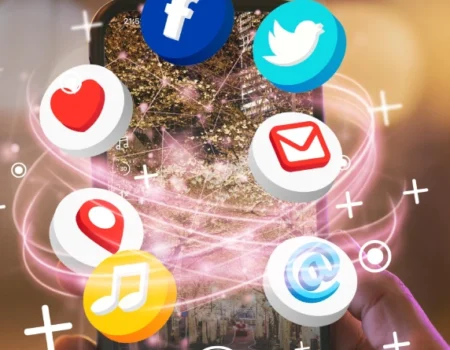Influencer Marketing: The Ultimate Guide
For those steering marketing efforts, the power of a skilled influencer is undeniable. Influencer marketing opens doors to specific audiences or niches, amplifying reach with precision. Integrating this tactic into your social media approach can elevate campaign results, boosting brand visibility, sparking lead generation, and fueling sales growth in a competitive digital space.
Collaborating with influencers allows brands to tap into their creative flair and genuine appeal. These individuals excel at crafting content that captivates their followers, lending a credible voice that enhances your brand’s narrative. Their ability to connect authentically makes them invaluable partners in cutting through the clutter of 2025’s online ecosystem.
The numbers behind influencer marketing speak volumes. According to Fortune Business Insights, the global influencer marketing platform market hit $17.40 billion in 2023 and is projected to soar to $71 billion by 2032, reflecting its skyrocketing adoption across industries.

Influencers also pave the way to platforms where your brand might lack a foothold. Take TikTok, for instance—creators there masterfully blend promotional posts with organic content, entertaining followers while subtly showcasing products. This seamless integration keeps audiences engaged and receptive.
As brands scale their influencer efforts in 2025, artificial intelligence (AI) steps in to sharpen outcomes. AI tools streamline processes, minimize risks, and enhance efficiency, empowering marketers to maximize every collaboration’s potential.
Yet, success hinges on strategy. It’s not just about chasing high follower counts—it’s about pinpointing the perfect influencer and optimizing that partnership. A savvy approach from the outset, paired with insight into brand collaboration dynamics, sets the stage for impact.
This detailed guide unpacks everything you need to know:
- What is influencer marketing?
- Key influencer marketing statistics
- What are the types of influencers?
- What’s the difference between influencers and creators?
- What are the types of influencer collaborations?
- How to build an effective influencer marketing campaign
- Top influencer marketing tools
- Influencer marketing and AI
- Influencer marketing do’s and don’ts
- Influencer red flags
- Regulations around influencer marketing
Let’s dive in!
What is Influencer Marketing?
So, what defines influencer marketing? At its core, it’s the art of placing products or securing endorsements via social media through individuals with dedicated followings, often tied to a specific niche. These influencers wield influence within their communities, built on trust and expertise.
Picture the heavyweights of social media—think chart-topping musicians or digital marketing thought leaders. But the landscape has evolved. In 2025, smaller influencers are making waves, proving that impact isn’t tied to follower size alone.
Social Media Calendar Template 2025
- Generate great content ideas
- Plan & schedule campaigns in advance
- Leverage key dates & trends
- Boost influencer or creator partnerships
Get my free calendar
Key Influencer Marketing Statistics
By 2025, Statista predicts over 4 billion social media users worldwide—a massive pool hungry for content. Where are they engaging?
Let’s explore some standout stats to highlight the potential:
- The influencer marketing industry is on track to hit $24 billion in 2025 (Influencer Marketing Benchmark Report).
- Ad spend per user in influencer advertising is projected at $5.60 in 2025 (Statista).
- Most marketers running influencer programs partner with 1–10 creators (2025 State of Social Media Report).
- 31% of users discover new products via influencers over other channels (HubSpot).
- Nano (44%) and micro (26%) influencers lead preferences over macro (17%) and celebrities (13%) (Influencer Marketing Benchmark Report).
- 59% of marketers plan budget increases for influencer campaigns in 2025 (Influencer Marketing Hub’s 2025 Benchmark Report).
- TikTok tops channels at 69%, followed by Instagram (47%), YouTube (33%), and Facebook (28%) (Influencer Marketing Benchmark Report).
For more, check out the blog ‘20 Influencer Marketing Statistics that Will Surprise You’.
Influencer Discovery Tools
Specialized software can simplify the hunt for the right influencers. Upfluence offers a platform that continuously updates creator profiles, analyzing their content for metrics like reach and engagement. Its Live Capture feature pinpoints top matches tailored to your brand’s needs.
Followerwonk, designed for X, aids in profile searches, account comparisons, and follower breakdowns, helping you identify influencers who align with your goals on that platform.
All-in-One Influencer Platforms
For a comprehensive approach, Grin serves as a creator management hub, streamlining partnerships from discovery to outreach, relationship nurturing, and campaign analysis.
Maverck provides a robust system to locate relevant influencers, oversee campaigns, and evaluate results. Its ‘Influencer Index’ catalogs millions of macro- and micro-influencers across major social networks globally.
Tip: With Instagram reigning as a key influencer hub in 2025, tools like Grin, Maverck, and Upfluence track performance there, while Aspire excels at discovery and recently added Instagram Stories monitoring.
Download an influencer tracker tool to organize and manage your list of potential collaborators.
Influencer Marketing and AI
AI is reshaping influencer marketing in 2025, delivering solutions that sharpen decision-making and streamline partnerships. Here’s how it boosts your efforts:
- Audience Segmentation: Tools like Audiense, Vista Social, and Hootsuite analyze data from multiple sources to define and group your ideal audience.
- Finding Influencers: AI cuts scouting time with platforms like HypeAuditor, assessing interests, demographics, growth, and authenticity.
- Content Creation and Optimization: Tools such as ChatGPT, Jasper, ScripAI, and Yarnet assist in researching, generating, and refining text or visual content.
- Performance Analytics: HypeAuditor’s AI tracks engagement, click-throughs, conversions, and other vital metrics for a clear performance snapshot.
- Virtual Influencers: Can’t find the perfect fit? AI crafts digital avatars, like the one Maybelline’s beauty brand debuted to launch its Falsies Surreal Extensions Mascara campaign.
Exploring AI is a smart move if you’re pressed for time, scaling campaigns, or need solid ROI proof in 2025.
Influencer Marketing Do’s and Don’ts
Influencers can lend your brand authenticity and shine, but picking the right ones is key. Here’s a 2025 checklist of best practices:
- DO Repurpose and Amplify: As your partnership gains traction, boost it by resharing content across your channels. Discuss with influencers how to repurpose their work—like turning a TikTok clip into an ad—to extend its reach.
- DO Foster Connections: Long-term ties with influencers beat one-off deals. Repeated collaborations deepen authenticity and reinforce brand recognition among their followers.
- DO Engage Actively: Before pitching, interact with their posts to build rapport. Stay present during and after the campaign to maintain momentum.
- DON’T Micromanage: Collaboration thrives on trust. Avoid stifling their creativity—provide a brief, approve scripts if needed, but let them steer scheduling and style.
- DON’T Be Generic in Outreach: When contacting influencers, ditch vague intros. Clearly outline your brand, product, and why their content fits, spotlighting specific posts you admire.
- DON’T Skimp on KPI Clarity: Define your campaign goals upfront and communicate expected metrics—like engagement or sales data—so influencers know what to deliver.
Influencer Red Flags
Spotting pitfalls early saves headaches. Watch for these warning signs in 2025:
- Imagery: No profile picture or generic stock images.
- Username: Odd or inappropriate handles.
- Profile: Hidden or anonymous accounts.
- Followers: They follow more than are following them.
- Bio: Generic or plagiarized descriptions.
- Website: No linked site.
- Content: Sparse or unoriginal posts.
- Recency: Brand-new profiles with little history.
Regulations Around Influencer Marketing
Compliance is non-negotiable. Key guidelines in 2025 include:
- ASA and CMA (UK)
- FTC (US)
- CCB (Canada)
- EU and Individual Countries
- AiMCO (Australia)
- ASCI Social (India)
Understanding these ensures your campaigns stay above board across regions.
Partner with our Digital Marketing Agency
Ask Engage Coders to create a comprehensive and inclusive digital marketing plan that takes your business to new heights.
Contact Us
Use Social Media & Influencer Marketing to Attract and Engage
With a slew of platforms at your fingertips, mastering their nuances is critical. A certified Social Media Marketing course dives into channels like Facebook, WhatsApp, LinkedIn, TikTok, X, YouTube, Instagram, and Pinterest, covering research, content, commerce, strategy, and customer service. Start today!







